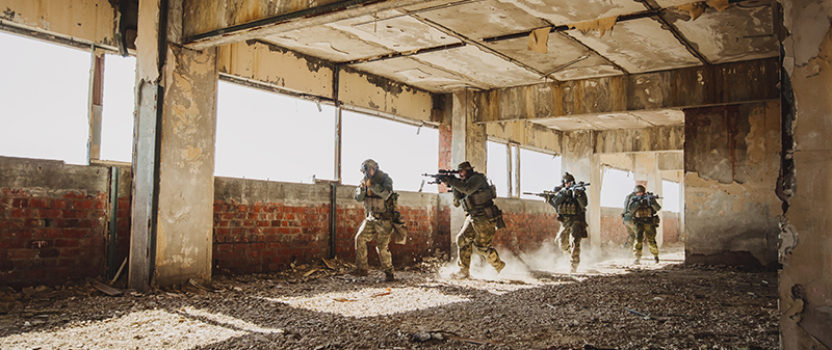Escalation of Force (EOF)
Escalation of Force is the intensification of defending or protecting oneself or others and determining how much force should be used in a situation. The military utilizes escalation of force to protect and defend service members in accordance with the Geneva Convention.
The Purpose of Escalation of Force
Escalation of Force is used to prevent military and law enforcement personnel from causing harm to enemy combatants who are surrendering or wounded and out of combat threat. EOF standards and protocol are there to protect civilians and their property. They also protect military and law enforcement personnel from being accused of unjustly using deadly force to eliminate a threat.
Hostile Act and Hostile Intent
How and when do you decide how much force to use? Simply put, the use of force up to deadly force is authorized by higher leadership when one of two actions take place: hostile act or hostile intent.
A hostile act is defined as a threatening act against U.S. forces, coalitions forces, and civilians. An example of a hostile act is an individual firing a weapon at civilians, U.S. forces, or coalition forces.
Hostile intent is a threat or act of intent to cause harm or death to U.S. forces, coalition forces, or civilians. An example of hostile intent is an individual or group attempting to place an IED.
The EOF Procedures
The EOF procedures should be reviewed with all military personnel prior to any combat mission and at any time while overseas. It is the unit commander’s responsibility to make sure each service members knows and understands the EOF procedures and how to follow them. Every military member should have and keep a written copy of EOF procedures on them at all times even if they are just on an FOB. The mission commander of NCOIC should read and go over EOF procedures prior to any and all missions. It is the responsibility of the mission commander and all mission personnel to know and fully understand EOF procedure prior to departure.
Shout
This is step one of EOF if you have positive identification of any threat. If there is a viable, verified act, you can shout “stop” in the language of the area you are in. When OEF/OIF first began, lasers and pen flares were used in this step. However, due to the misuse of both, the military removed them from use around 2009.
Show
“Show” is step two of EOF. Once there is PID, you may show your weapon and prepare to use it. If there is a verified threat, you may match force with force to eliminate it.
Shove
This step is somewhat vague and is primarily used during base operations for demonstrations or riots. You can’t just fire your weapon into a crowd to get them to cease. However, if there is a hostile act, you may shout to move back, show your weapon, and prepare to use it or shove if a person is too close to you. Or if they pose a threat to military personnel, equipment, or property.
Shoot
Once the threat is verified and all other EOF procedures have been followed, you may fire your weapon, matching force against force to eliminate the threat. You will not fire warning shots and must minimize; only use up to the amount of force to eliminate the threat. You cannot go firing an MK-19 in civilian populous against people who are firing at you with an AK-47. You must minimize any civilian harm and collateral damage. Once again, I will say one of the most important parts of EOF is PID; you must never make assumptions as a military member.
EOF
Every member of the military must realize that EOF is there to protect you as long as you follow it. EOF procedures often happen simultaneously. If someone is firing at you, you are not expected to shout, show, and shove. You may immediately shoot your weapon to defend yourself and others. EOF procedures are there to protect the innocent and allow you to do your job and complete the mission safely, and most importantly, to protect and defend innocent civilians and property from harm or damage.


